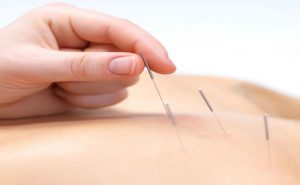Jun 20 2017
Acupuncture in the ED
 Acupuncture still doesn’t work. We have thousands of studies collectively showing that it does not matter where you stick the needles or even if you stick the needles. Acupuncture is an elaborate placebo, and nothing else. It is not based on any sound scientific principles or knowledge about anatomy or neurophysiology. It is as much a scientific dead end as homeopathy, the ether, phrenology, and the four humors.
Acupuncture still doesn’t work. We have thousands of studies collectively showing that it does not matter where you stick the needles or even if you stick the needles. Acupuncture is an elaborate placebo, and nothing else. It is not based on any sound scientific principles or knowledge about anatomy or neurophysiology. It is as much a scientific dead end as homeopathy, the ether, phrenology, and the four humors.
This, of course, creates a dilemma for acupuncture proponents. For a few decades they have been crying for scientific study of what they are sure (from their own anecdotal experience and philosophy) must work, but as the science came in it showed that their favorite treatment did not work. For a while you can get away with criticizing the studies – they are not doing it right. But then acupuncturists design and carry out more and more rigorous studies, accounting for all their criticisms, and acupuncture still doesn’t work.
We are definitely way past the point (thousands of studies over several decades) to conclude that acupuncture is a lost cause. Any intellectually honest scientist at this point would have to conclude they were wrong, and move on. Because this is medicine, and not just abstract science, there is also an ethical component. I could argue that it is now unethical to stick acupuncture needles into patients because we have sufficient evidence to conclude doing so is of zero benefit, and is also invasive and carries some risk.
That, of course, is not what happened. Instead acupuncturists ignored the research, or continued to nitpick and deny. Or they just cherry pick the studies that show what they want (even if they have to misinterpret them). But still they want to sell acupuncture as a modern science-based treatment, but pesky high quality studies keep getting in the way.
So, their solution was to stop conducting high quality acupuncture studies. Instead they conduct low quality studies, the kind that are guaranteed to produce a positive result, especially for a subjective outcome. Such studies are normally preliminary or pilot studies, and we are past that stage of acupuncture research. No worries – just call them “pragmatic” studies. Pragmatic studies involved treatments in use in a real setting, and should only be done on treatments that have already proven efficacy. They are not designed themselves to show efficacy, because they are not blinded.
Pragmatic studies are therefore perfect for promoting a bogus treatment. They carry the assumption that the treatment works, they sound impressive, are practically guaranteed to produce the results you want, and they are wonderful for promotion. Problem solved.
Acupuncture in the ED
The latest study to fit this mold has been circulating, getting breathless reviews in the media. Dozens of well-meaning skeptics have sent me the study, knowing there must be something wrong with it but not sure what. That is the point – such studies are meant to look impressive when they actually show nothing. The study is: Acupuncture for analgesia in the emergency department: a multicentre, randomised, equivalence and non-inferiority trial.
Here are the methods:
A pragmatic, multicentre, randomised, assessorblinded, equivalence and non-inferiority trial of analgesia, comparing acupuncture alone, acupuncture plus pharmacotherapy, and pharmacotherapy alone for alleviating pain in the emergency department.
You don’t have to read much past that to see why this study tells us nothing. It’s a pragmatic study, and the subjects are not blinded. Patients know if they are getting acupuncture or not. We know from many studies that, first, there is a placebo effect for any treatment. Further, placebo effects are greater for procedures than pills, and more for invasive procedures, and more if there is a practitioner interacting with the patient.
This is also a non-inferiority study. The results showed no difference in the primary outcome, pain at 1 hour, but all groups had a fairly low response, with about 15% having adequate pain relief. The problem with this is that this is essentially negative results. Nothing worked well. We don’t know if this study was capable of showing a treatment effect – there was no no-treatment arm for comparison and to calibrate the study. This is understandable as no-treatment would be unethical, but as a result the study is essentially uninterpretable.
Also, buried in the body of the paper but not in the abstract is this gem:
“The acupuncture only group received significantly more rescue medication therapy than the groups that received pharmacotherapy (at T1: P ¼ 0.16; after T1: P ¼ 0.008; Box 7).”
Rescue medication use is perhaps the most objective measure in this trial. People might report their pain as decreased, especially if they agreed to be in an acupuncture study and were treated by a nice acupuncturist. But whether or not they will ask for or accept rescue medication for their pain is a more objective measure of their real pain. This probably should have been the primary outcome measure – and it showed highly significant inferiority for acupuncture.
So yet again we see a low quality study designed to show acupuncture works and producing results that can be presented as showing acupuncture works. Yet in reality the primary outcome really shows nothing, and the most reliable outcome shows that acupuncture doesn’t work. Still, the study is making the rounds and yet another study showing acupuncture works.
That is propaganda, not science.






